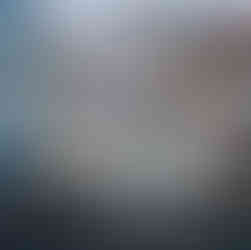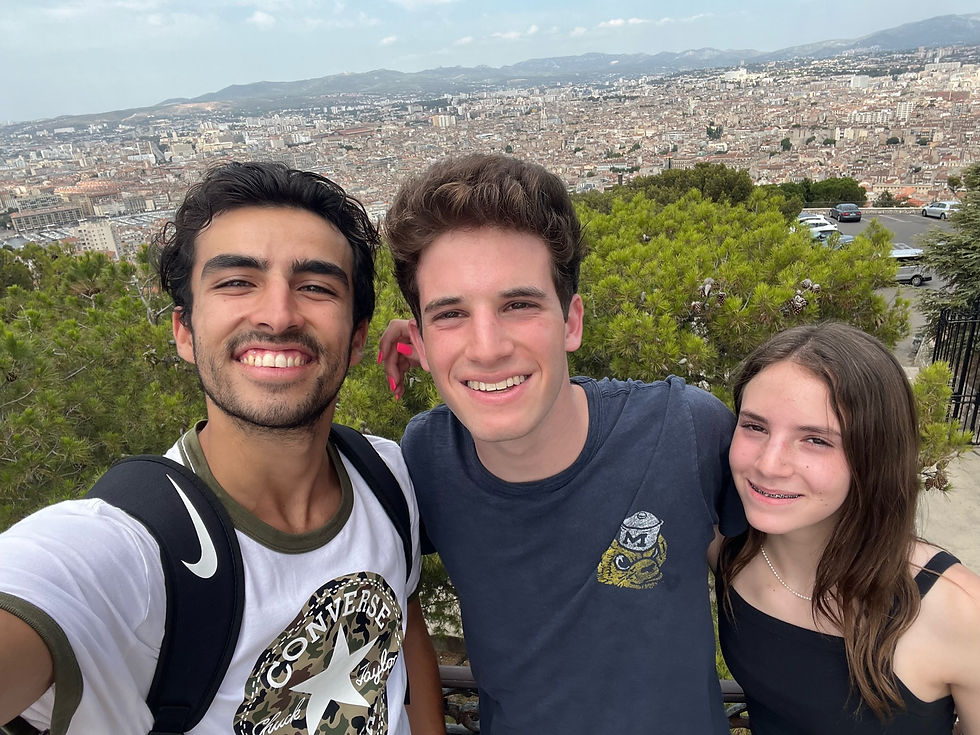Space Invaders! And some other things, I guess
- Ian Rosenberg

- May 27, 2022
- 5 min read
Welcome back to another installment of the blog! I’m your host, Ian, and today, we will start the mundane topic of traditional French cuisine before moving on to the fascinating business of hunting Space Invaders around Paris.
Tuesday morning, CEA took us on a tour of the neighborhood of Montorgueil to enjoy the delicious eats there. Our guide began the tour by asking us if we recognized the French words that made up the name of the area. Mont was an obvious one, referring to any sort of sloped or elevated surface. This road was certainly on a decently steep slant, so it makes sense to call it a mont. Orgueil, most of the time, directly translates to pride. But in this case, it takes on a less common meaning of a tool that is used to take trash and move it elsewhere. This meaning is appropritate, as the “mont” that we’re referring to in the name is actually a medieval garbage pile that is many meters deep. Since it has been paved over and turned into a true district, the quarter has been a food hub, hence, we took our tasting tour there.

Entrance to Montorgueil
We began at a boulangerie (bakery) and tried not just any baguette, but a tradi, short for tradition, which is a baguette that is prepared and baked in a slightly different way as for the crust to have a nice crunch to it. It was super delicious, and now when I go to order my baguettes, I get only tradis. They cost about 10 cents more than a usual baguette, but the investment is certainly worth it. The next item was also bread, but this time, a roll with fig baked into it. I wasn’t the biggest fan, but it was hot and freshly baked, which was certainly appreciated. Then we tried our hand at some cold cuts from a butcher. There was chorizo, ham, and another kind of spiced ham like the chorizo, but in more of a French style. I’m not the biggest fan of cold cuts, but I didn’t mind the spiced hams.
After the meat, of course, came the cheese. We each had five pieces of cheese, starting with two cow cheeses, then two goat cheeses, and ending with a piece of sheep cheese. The first one was the famous Camembert. As you may recognize from the local grocery store back at home, this cheese had a “crust” (for lack of a better word) to it. You do indeed eat the crust of the cheese, which felt weird, but, it didn’t taste like much. The rest of the cheeses had no crust. Most of us, myself included, weren’t too big of fans of the goat cheeses, but the sheep cheese was delicious. You also eat it with this little jelly square made of paste from the Quince fruit. Don’t worry, I’d never heard of it either. But the combination of sweet and savory was super delicious, and the textures mixed well. We discussed why the French eat their cheeses at the end of the meal instead of the beginning. Any guesses? Well, spoilers, it’s because you want to eat the most fatty, unhealthy things when you’re already almost full! Makes a lot of sense, actually, and she said that it’s the French secret to staying in shape despite eating nearly pure fat in some of these hardier cheeses.

The cheeses we ate (discussed from inside to outside)
We ended with macaroons from a bakery that’s been around since 1730! Pistachio and chocolate flavored. Of course, delicious. One interesting note before I move on: it is illegal to change historic store fronts in Paris, so walking around, you see what used to be cafés but are now convenience stores, for example.

Old storefront preserved. Now a convenience store, originally a café.
See, I’ve been noticing recently that there are these pixelated characters plastered on walls, street corners, and even some rather high-profile monuments. I was so curious as to what these were, and I suppose I asked the right person. The woman giving the tasting tour knows a lot about these things. They’re an art instillation around the city that began in the ‘90s. Someone developed an app to track these, and every time you get a picture of an invader you haven’t flashed before, you get points roughly proportional to the size of the artwork. Small ones will get 10 or 20 points, larger may give 30 or 50, and the largest give 100. In total, there are 1,471 Space Invaders in the city of Paris alone, totaling 39,880 points available. They’re also in cities all over Europe, some elsewhere, and even one on the International Space Station! Our tour guide has currently around 27,000 points, which corresponds to a stupid amount of invaders captured. She said that her family at one point was picking vacation destinations based on where invaders were… She showed us around to some of her favorites, before letting my friend and I go find our own for about three hours. By the end of the day, we both had about 1,000 points, and after three days with the app, my score is 1,780, with 48 invaders captured. This is supremely addicting. Finally before class, we visited the Musée D’Orsay.
Left: a space invader in the wild. Right: some of the invaders I’ve captured.
I actually hadn’t eaten all day besides that food tour, so when coming back from class, I decided to pay my local boulangerie a visit after the supermarket, inspired by the tour from earlier. Since I was so hungry, I was stumbling through my French, but I think the boulangère appreciated my French, as she gave me a little extra treat to go along with my loaf of brioche. Both were delicious.
The main attraction of the next two days was the Louvre. We couldn’t get much time on Wednesday because I had class (and a quiz) at 5:30 and my friend’s class ended at 2, but we basically high-tailed it to the Mona Lisa, and then appreciated the amazing artwork in the surrounding area for about an hour. There were some really amazing paintings, and rather (un)popular opinion, some way cooler paintings than the Mona Lisa. The next day was spent entirely in the sous-sols, the basement floors (which are interestingly denoted by negative numbers, and the ground floor is 0 in France). There, we saw many amazing artifacts from Mesopotamia and Egypt. I took a class last semester on ancient languages and scripts, and it’s always been a topic I’ve been fascinated by. There were more cuneiform objects than one can count, including a stele (vertical stone tablet) with the Code of Hammurabi—the first true law code. Certainly a very cool object. Meanwhile, as you can see in the photo, the “Mona Lisa” are of the museum was packed, but this area was nearly empty! It made me slightly angry that people flock to see this one random painting that society has decided is important, rather than admiring the frankly unbelievable and exotic achievements of humans in the past that still affect us today.
Top left: no caption needed. Middle: Cuneiform tablet. Right: Code of Hammurabi tablet.
I walked around the city for much of the rest of the day, before going rock climbing at this very cool place close to my house with some friends at night.
A+ (= à plus tard, later!)












Comments